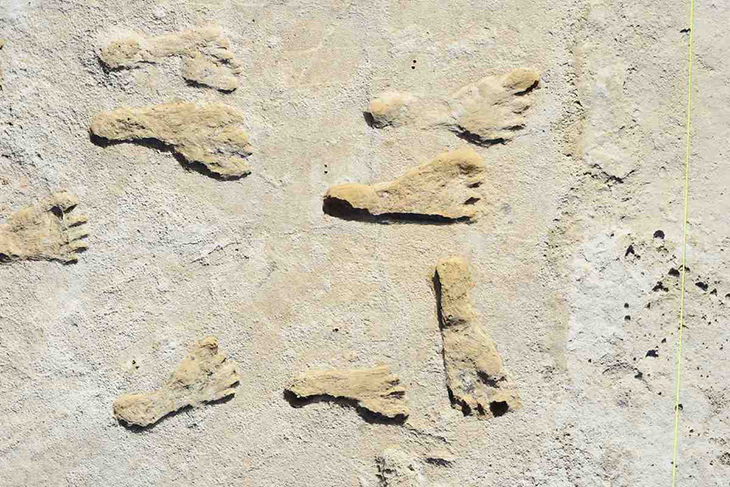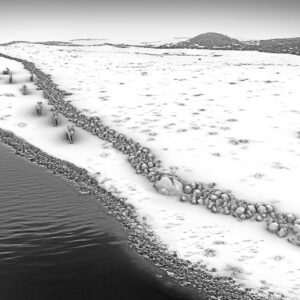
For many, many years, the prevailing belief on human presence in North America coincided with the onset of the last Ice Age, approximately 13,000 to 16,000 years ago. However, a recent examination of fossilized human footprints in White Sands, New Mexico, challenges this notion, indicating that humans inhabited the region at least 21,000 years ago.
This timeframe corresponds to the peak of Earth’s ice sheet and glacier coverage, known as the Last Glacial Maximum.
The initial study, published in 2021, sparked global discussions within the scientific community regarding the accuracy of the dating results. The team initially used radiocarbon dating on seeds from the aquatic plant Ruppia cirrhosa found alongside the footprints, yielding an age of 21,000 years.
But, potential complications arose as aquatic plants can absorb carbon from dissolved atoms in water, potentially leading to artificially inflated ages.
In a subsequent study, co-lead author and researcher at the US Geological Survey, Dr. Jeff Pigati, reaffirmed the original findings.
Dr. Pigati said, “The immediate reaction in some circles of the archaeological community was that the accuracy of our dating was insufficient to make the extraordinary claim that humans were present in North America during the Last Glacial Maximum.”
“But our targeted methodology in this current research really paid off,” he added.
The team focused on radiocarbon dating of conifer pollen, derived from terrestrial plants, to circumvent issues associated with dating aquatic plants like Ruppia. Painstaking procedures, including isolating around 75,000 pollen grains for each sample, were employed.
The pollen ages aligned statistically with the corresponding seed ages.
Dr. Pigati’s co-author, Kathleen Springer, also at the USGS, said, “Even as the original work was being published, we were forging ahead to test our results with multiple lines of evidence. We were confident in our original ages, as well as the strong geologic, hydrologic, and stratigraphic evidence, but we knew that independent chronologic control was critical.”
The research team also utilized optically stimulated luminescence, a different dating method, on quartz grains collected within the footprint-bearing layers. This approach revealed a minimum age of around 21,500 years, providing additional support to the radiocarbon results.
White Sands National Park details the footprints discovered in the region, featuring imprints of not only humans but also dire wolves and giant ground sloths.
In 2018, footprints believed to belong to a female were found, suggesting a poignant narrative of her journey with a toddler. The imprints indicate her carrying the child and shifting from side to side, occasionally setting them down, and the mud slipping under the added weight.
The 2021 paper reveals that most footprints likely originate from teenagers and children, based on stature and walking speed, as reported in the journal Science.
“One hypothesis for this is the division of labor, in which adults are involved in skilled tasks whereas ‘fetching and carrying’ are delegated to teenagers. Children accompany the teenagers, and collectively they leave a higher number of footprints that are preferentially recorded in the fossil record. This pattern is common to all excavated surfaces.”
What are your thoughts? Please comment below and share this news!
True Activist / Report a typo


